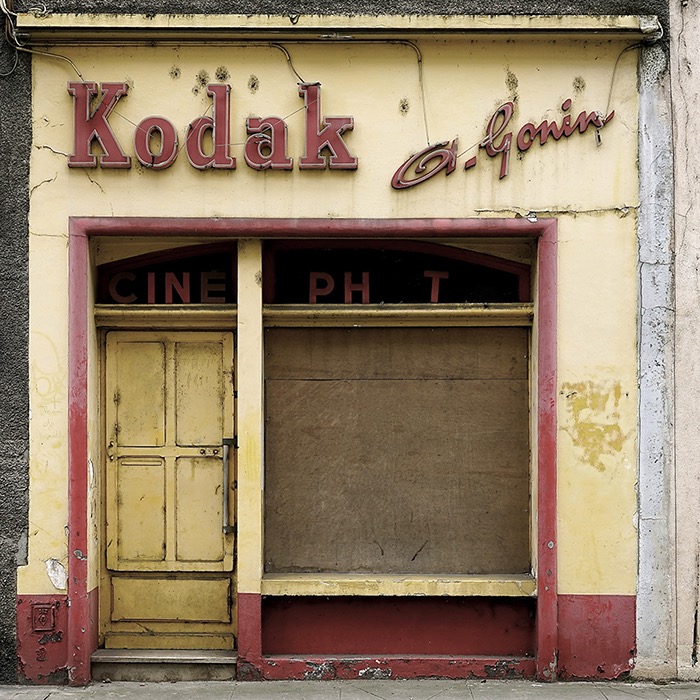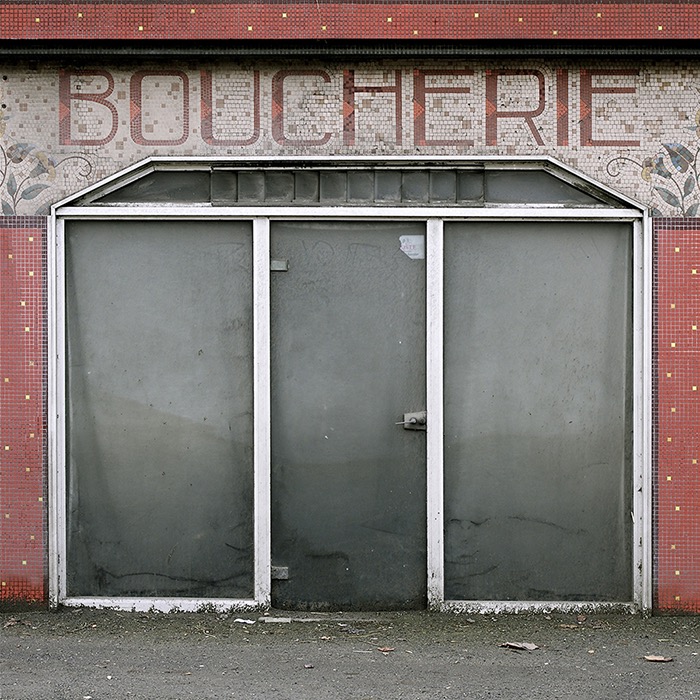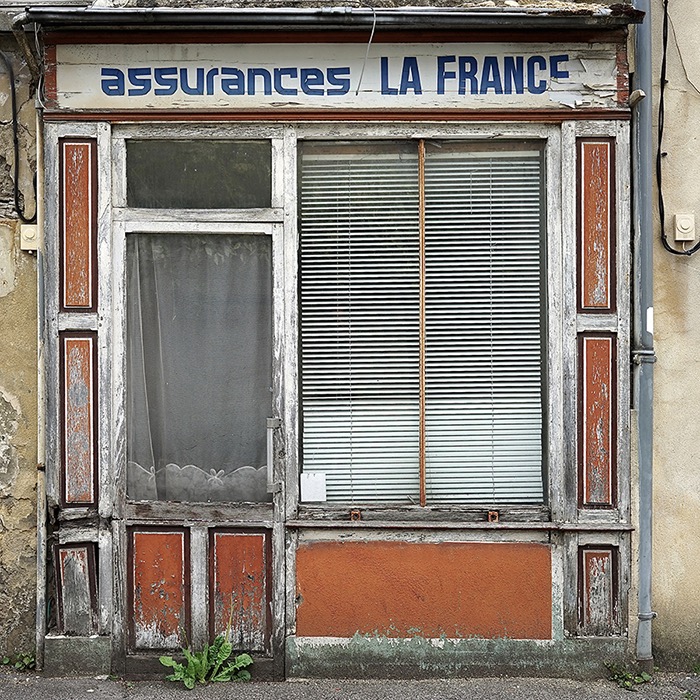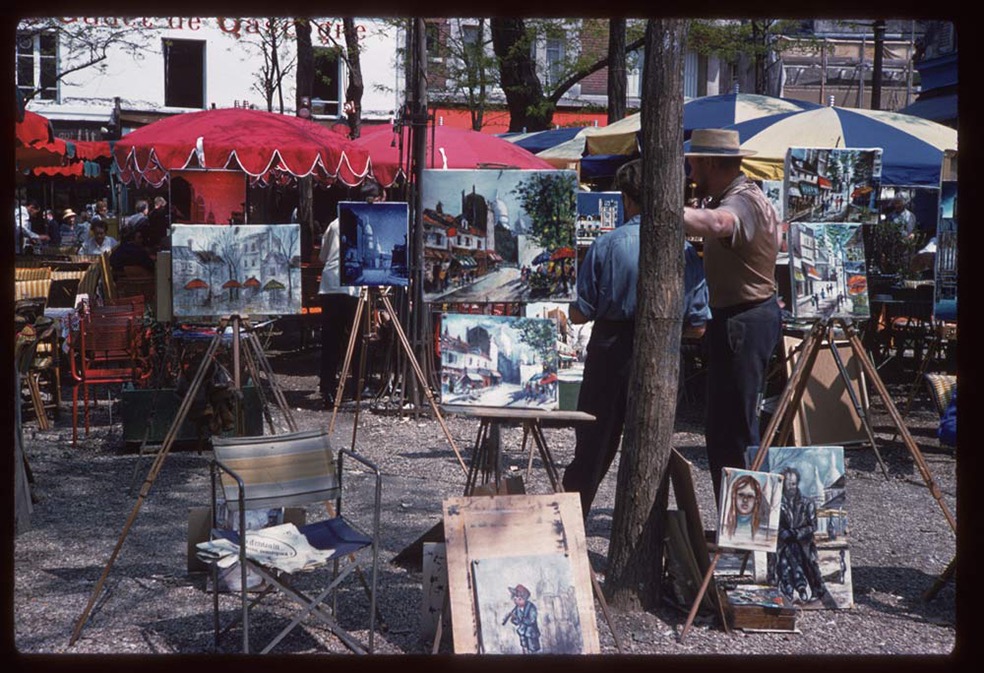Thibaut Derien began to travel France a decade ago, deliberately avoiding major roads and outputs bordered by kilometers of garish signs, bland prefabricated buildings, uniform housing estates and head-spining roundabouts, that years of careless urban policies have emerged as the new aesthetic standards of suburban areas.
He was looking for the few small shops still standing around but abandoned, witnesses of an era, a trade, a taste of fashion. Small shops deserted, left to the vagaries of time. He has carefully selected among the many found on his way for the special emotion that emanated from them. They inspired him this ghost town watching helplessly entertaining impersonal shopping centers , there in the distance. Not so far.

These small shops populate Thibaut Derien’s ghost town, forming a cemetery, full of traces, remnants of a bygone era, swept by the industries, franchises and customers indifference bewitched by the sirens of mass consumption and temples of metal and cinder blocks. In this shops cemetery, the curtains are down, drawn, sealed doors, bricked windows. Storefronts suffocate within a strict framework, square, overshadowing everything else. Walker Evans and Eugène Atget, before him, had immortalized small businesses facing extinction with frontality. But Derien’s frontality is more extreme, cutting shops in their sole façade, excluding any depth of field, destroying the volumes likely to revive the bloodless ruins and silencing what made the particularity of these shops proximity: the social bond.
A pure frontality that blocks the view of the spectator and makes him feel violently the end. So we are surprised to think that after all these small shops are perhaps an illusion, film sets that painted facades would be supported by simple scaffolding. As if we would prefer to believe that it was just a dream. The optimistics ones would let their imagination wander. As the images keep the minimum frontal information, they also give a generic value and a kind of virginity to shops: thousands of stories could be written behind these desolate facades.

Forgotten the anxiety of the end and the empty, we are nevertheless charmed by the beauty of the lines, the words, the materials, the typographies, the openings and closings, the shapes and colors of all these shops. And from these empty, orphan windows, suddenly emerge emotion and even more, a certain vitality which should come from the past, one that surprises our imagination to invent.
About the author: French author and performer of four albums of songs, Thibaut Derien has now swapped the music and words for silence and image. After ten years dedicated to the music, he fully returns to his first passion, photography. His series «I live in a ghost town» has also emerged during his tours. He lives and works in his ghost town. Thibaut Derien belongs to a family of photographers who make documentary photography an art, the triviality of everyday life, a poem, and notice with alarm the changes in our society , its contemporary ugliness and its past splendor. His ghost town reveals the ruins of a society that no longer exists, forces us to face our responsibilities and reveals both the beauty that emerges from its rubble.
Website: derien.fr












